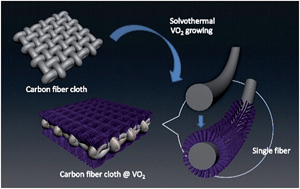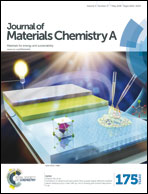Carbon fiber cloth@VO2 (B): excellent binder-free flexible electrodes with ultrahigh mass-loading†
Abstract
Flexible batteries have attracted much attention in recent years due to their promising applications in flexible displays, portable consumer electronic devices, and thin-film-based electronics. However, their practical applications are still limited by their low active material mass-loading in flexible electrodes and poor lithium storage performances. In this work, we have successfully grown highly crystalline VO2 nanobelt arrays on carbon fiber cloth (CFC) for the first time. The strategy only involves a facile one-pot solvothermal method. As binder-free flexible electrodes for LIBs, even with active material mass loading dramatically reaching up to 5.2 mg per square centimeter, such a novel CFC@VO2 (B) nanobelt array cathode electrode still exhibits a specific capacity of 145 mA h g−1 (90% of theoretical capacity), excellent cyclability with capacity retention over 90% after 200 cycles at ∼9C (1000 mA g−1), and high rate capability at high current densities up to ∼20C (2000 mA g−1). Such an excellent cathode material is very desirable in high-power flexible LIBs. The effective combination of CFC and a high areal mass loading of active materials described in this paper is a feasible and effective solution to design high-performance flexible batteries, especially high-power flexible batteries.


 Please wait while we load your content...
Please wait while we load your content...